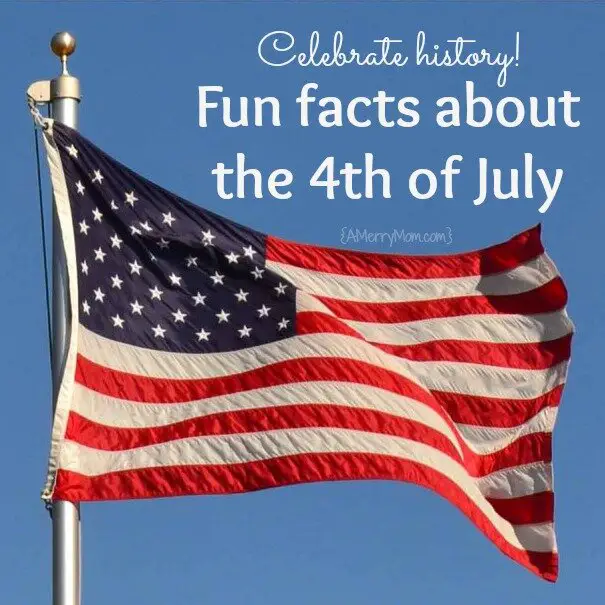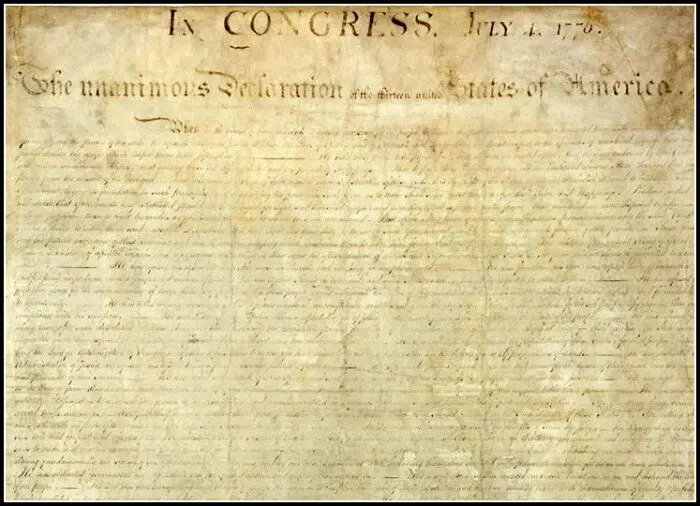How much do you know about the origins of the U.S. Independence Day on July 4?
I thought I was well educated about the Revolutionary War period, but I was surprised to learn some fun facts about the 4th of July holiday. It’s fun to discuss these historical details with kids as part of the Independence Day celebration!

Our modern festivities for the Fourth of July owe a lot to the vision of John Adams, our second president. In a letter, Adams wrote:
“The Second Day of July 1776, will be the most memorable Epocha, in the History of America. I am apt to believe that it will be celebrated, by succeeding Generations, as the great anniversary Festival. It ought to be commemorated, as the Day of Deliverance by solemn Acts of Devotion to God Almighty. It ought to be solemnized with Pomp and Parade, with Shews, Games, Sports, Guns, Bells, Bonfires and Illuminations from one End of this Continent to the other from this Time forward forever more.”
His description sounds a lot like our celebrations today with fireworks, parades, and other fun events throughout the United States.
So why did John Adams want to celebrate the second day of July in that letter, which was written to his wife on July 3, 1776? He thought Independence Day should be celebrated on July 2 since that was the date in 1776 when the Continental Congress voted to declare U.S. independence.
We celebrate on July 4th instead of July 2nd because Congress formally approved the language in the Declaration of Independence document on July 4, 1776. The Declaration of Independence wasn’t officially signed until August 2, 1776, but the date at the top of the document is listed as July 4, and that is the date that became associated with U.S. independence.

Declaration of Independence image via The National Archives.
John Adams reportedly protested commemorating July 4 as the beginning of U.S. independence by declining invitations to appear at events on that date.
Ironically, John Adams died on July 4 in 1826. Thomas Jefferson, Adams’ vice president and his successor who served as the third U.S. president, died a few hours earlier on the same day. It was the 50th anniversary of the adoption of the Declaration of Independence.
(Interestingly, James Monroe was the other president who died on July 4. His death was in 1831. He was the fifth U.S. president and the last president who was considered a Founding Father of the U.S. Monroe served in the Revolutionary War.)
In 1777, while the Revolutionary War continued, Philadelphia held the first annual independence celebration on July 4. Later, Massachusetts was the first state to make July 4th an official state holiday in 1781.
However, it wasn’t until years later that Independence Day was celebrated nationwide. Fourth of July celebrations became more widespread after the War of 1812, when the U.S. again faced off against the British. Eventually the U.S. enacted July 4 as a federal holiday in 1870, and expanded that to a paid holiday for federal workers in 1941.
Despite the U.S. declaration of its freedom in 1776, the Revolutionary War continued until the British surrendered after the Siege of Yorktown on October 19, 1781. The The Treaty of Paris was later signed by representatives from the United States and Great Britain on September 3, 1783 to mark the official end of the conflict.
Now that you know these fun facts about the 4th of July, have a great Independence Day!
Sources: National Park Service – nps.org / History.com / Biography.com
Looking for ideas for your Fourth of July celebration? Check out my summer Pinterest board and pin along with me!
Follow Lisa {A Merry Mom}’s board Celebrate – Summer on Pinterest.


Pingback: July 4th Celebration Blast! + HM #190